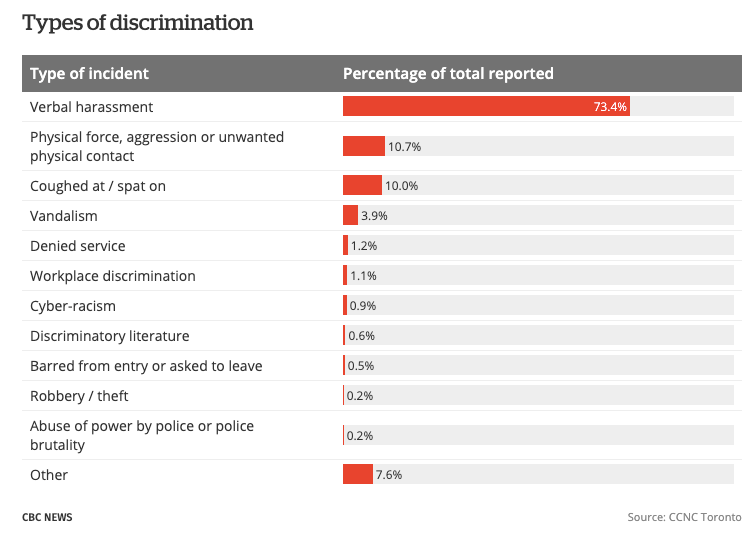
The recent coronavirus-related racism has opened the eyes of many governments and institutions, and have inspired many to take the active approach in helping Asians thrive anywhere in the world without prejudice.
Challenges facing Asian international students: #StopAsianHate, campus diversity
Asia is considered as the world’s largest and most populous continent. It is no wonder, therefore, why most international students who find themselves in higher education institutions (HEIs) in Western countries—thanks to pathway programs—are mostly Asian, are partly of Asian descent or based in Asia.
Specifically in Canada—a top five country considered best for international students, according to a survey by CEOWorld—the top 10 international student source countries are India, China, South Korea, France, Vietnam, the United States, Iran, Brazil, Nigeria, and Mexico. This was according to a 2020 report released by the Immigration, Refugees and Citizenship Canada.
In this list alone, half of the countries are part of the Asian continent (India, China, South Korea, Vietnam, Iran). The same list extends to the rest of the source countries rounding up the top 20, and includes six other countries in Asia (Bangladesh, Japan, the Philippines, Taiwan, Turkey, Hong Kong, Pakistan).
Overall, student recruitment from Asia totaled 464,490 out of Canada’s 642,480 international students, making up an astonishing 72 percent. This trend highlights Asia’s contribution to the global market of higher education.
Market crash, industries cope
On March 11, 2020, the World Health Organization (WHO) officially declared the coronavirus pandemic. In an April 2020 situation report, WHO released its findings on the source of COVID-19:
“The first human cases of COVID-19, the disease caused by the novel coronavirus causing COVID-19, subsequently named SARS-CoV-2 were first reported by officials in Wuhan City, China, in December 2019,” the report stated. “While some of the earliest known cases had a link to a wholesale food market in Wuhan, some did not. Many of the initial patients were either stall owners, market employees, or regular visitors to this market. Environmental samples taken from this market in December 2019 tested positive for SARS-CoV-2, further suggesting that the market in Wuhan City was the source of this outbreak or played a role in the initial amplification of the outbreak.”
The world had not been the same since. A week after the WHO declaration, the S&P 500 declined 34 percent from its February highs. In February, 59 airline companies suspended or limited flights to China. Some countries, including the United States, Russia, Australia and Italy, imposed travel restrictions. This led to a drop in travel and tourism numbers—to the tune of $935 billion in losses—subsequently felt by the global international education market.
In response, UNESCO launched its Global Education Coalition which aimed to prioritize education recovery to “avoid a generational catastrophe.” The coalition soon realized the importance of internet connectivity in relation to international education at all levels. In effect, education technology was at the forefront of the educational revolution with higher education institutions shifting from traditional means of education delivery to online means—and in just a few days’ time for some institutions.
Racism during the pandemic
It is unfortunate, however, that the pandemic has brought about numerous stressors in society. Besides financial and psychological burdens, racial tension in the United States reached a tipping point on May 25 surrounding the unjustly killing of black man George Floyd while in police custody. This sparked a major international protest, which many saw as the peak of the #BlackLivesMatter movement founded in 2013.
However, almost a year later, the world was stirred once again with the news of a series of mass shootings which occurred at three spas in Atlanta which resulted in the deaths of eight people, six of whom were Asian.
This led to another social outburst, this time supporting the #StopAsianHate cause. Things took a turn for the worst, when on March 31, a security video went viral on the internet catching the brutal assault of a 65-year-old Asian American woman in New York.
“In recent weeks, Asian Americans in New York have reported being punched in subway cars, spit on and pummeled with metal pipes—an ugly echo of a national trend that activists say gained traction as former president Donald Trump has used racist terms to tie the coronavirus pandemic to China,” reported the Washington Post.
Challenges, Responses in Education
In Canada, racism against Asians has been prevalent ever since. This was the sentiment of Justin Kong, Toronto chapter executive director of the Chinese Canadian National Council.
The council is calling on the government to tackle anti-Asian racism after survey results showed more than 1,000 cases of Asian racism since the pandemic.

A new report by the Chinese Canadian National Council – Toronto chapter compiled 1,150 occurrences of anti-Asian racism across Canada between March 10, 2020 and Feb. 28, 2021. Included in the results are the types of discrimation Asians experienced. / CCNC Toronto.
Unfortunately, the effects of racism have crept in from the streets to schools as well. One case that caught the attention of global higher education institutions was when the University of Cincinnati did not renew the contract of one of its instructors after his email to one of his students was the topic of controversy on the internet.
The instructor responded to a student who had to miss an activity due to mandatory COVID-19 quarantine with this: “For students testing positive for the Chinese virus, I will give no grade.”
The phrase “Chinese virus” has been deemed not only unscientific but also xenophobic.
“These types of xenophobic comments and stigmatizations around location or ethnicity are more than troubling,” wrote University of Cincinnati dean John Weidner in an email to CNN.
According to a report released by Stop AAPI Hate Youth Campaign in September 2020, 25 percent of Asian-American young adults have experienced discrimination through verbal harassment, shunning and cyberbullying.
These numbers should move higher education institutions to tackle some challenges Asian students face. According to an article by EducationWeek, three challenges stand out: Asian students are treated as monolithic, most Asian families, students are relatively new to their new country, and last, because Asians are seen as a minority, institutions fail to provide them with special help or attention.
The same article cites the following action plans for institutions and its educators: create safe spaces now for students and staff; sustain support for these students; question the historic erasure of Asians from the curriculum; and doing one’s homework if considering ethnic studies courses.
Despite several cases of hate crimes against Asians being reported—Orange County alone reported 17 hate crimes from 2019 to 2021, compared to 30 from 2010 to 2019—it is encouraging to note that some scholars in higher education institutions are taking the lead in educating themselves in Asian American studies, public health and other related fields to enable them to confront coronavirus-related racism through teaching, research, and outreach.
“I’m using a class on Asian American history to show how these cyclical patterns have echoes in our contemporary environment, giving them actual historical evidence about what things looked like to help them understand the consequences of historical narrative,” said UC associate professor Jason Chang.
Conclusion
International education proves beneficial to international Asian students not only because of the variety of programs or courses offered but also because of the culture they share with their host countries and the culture they take back with them. While some choose to migrate to other countries, some choose to go back and share with their home countries what they have learned, thanks to initiatives like, but not limited to, student exchange programs or international pathway programs.
The recent coronavirus-related racism has opened the eyes of many governments and institutions, and have inspired many to take the active approach in helping Asians thrive anywhere in the world without prejudice.
Racism and discrimination have no place in higher education institutions. In fact, these have no place anywhere in the world. Thanks to a highly globalized and internationalized society through its international students, the world is learning to leave behind its ugly past and is now turning its head to a future that provides citizens of the world with equal opportunities to succeed.
Read more:
Data sources:
Ireland, S. (2021, February 10) Revealed: World’s Best Countries For International Students, 2021. CEOWORLD. Retrieved from https://ceoworld.biz/2021/02/10/revealed-worlds-best-countries-for-international-students-2021
El-Assal, K. (2020, February 20) 642,000 international students: Canada now ranks 3rd globally in foreign student attraction. CIC News. Retrieved from https://www.cicnews.com/2020/02/642000-international-students-canada-now-ranks-3rd-globally-in-foreign-student-attraction-0213763.html
COVID-19 Situation Report-94 (2020, April 23). World Health Organization. Retrieved from https://www.who.int/docs/default-source/coronaviruse/situation-reports/20200423-sitrep-94-covid-19.pdf
Pisani, B. (2021, March 16) One year ago stocks dropped 12% in a single day. What investors have learned since then. CNBC. Retrieved from https://www.cnbc.com/2021/03/16/one-year-ago-stocks-dropped-12percent-in-a-single-day-what-investors-have-learned-since-then.html
Chinazzi, M. (2020, April 24) The effect of travel restrictions on the spread of the 2019 novel coronavirus (COVID-19) outbreak. Science. Retrieved from https://science.sciencemag.org/content/368/6489/395
Impact assessment of the COVID-19 outbreak on international tourism (2020, December). World Tourism Organization. Retrieved from https://www.unwto.org/impact-assessment-of-the-covid-19-outbreak-on-international-tourism
Global Education Coalition. UNESCO. Retrieved from https://en.unesco.org/covid19/educationresponse/globalcoalition
Castelo, M. (2020, November 12) The State of Educational Technology in a Post-Pandemic World. EDTech Magazine. Retrieved from https://edtechmagazine.com/k12/article/2020/11/state-educational-technology-post-pandemic-world
View From The Forest: Covid Reaction To Online Teaching (2020, December 1). MSM Higher Ed. Retrieved from https://www.youtube.com/watch?v=RF73iiTdAKg
Hill, E. (2020, May 31) How George Floyd Was Killed in Police Custody. The New York Times. https://www.nytimes.com/2020/05/31/us/george-floyd-investigation.html
8 Dead in Atlanta Spa Shootings, With Fears of Anti-Asian Bias (2021, March 26. The New York Times. Retrieved from https://www.nytimes.com/live/2021/03/17/us/shooting-atlanta-acworth
Elfrink, T. (2021, March 31) New York man charged with hate crime in Asian American attack that bystanders watched without helping. The Washington Post. Retrieved from https://www.washingtonpost.com/nation/2021/03/30/asian-american-attack-newyork-condo/
Nicholson, K. (2021, March 23) Surveys find more than 1,000 self-reported incidents of anti-Asian racism since start of pandemic: report. CBC News. Retrieved from https://www.cbc.ca/news/canada/asian-racism-hate-canada-pandemic-1.5959788
Flaherty, C. (2020, September 22) Professor Who Called COVID-19 the ‘Chinese Virus’ on Leave. Inside Higher Ed. Retrieved from https://www.insidehighered.com/quicktakes/2020/09/22/professor-who-called-covid-19-%E2%80%98chinese-virus%E2%80%99-leave
Wang, C. (2020, September 18). ‘You have Chinese virus!’: 1 in 4 Asian American youths experience racist bullying, report says. NBC News. Retrieved from https://www.nbcnews.com/news/asian-america/25-percent-asian-american-youths-racist-bullying-n1240380
Sawchuk, S. (2021, March 25) Anti-Asian Violence: What Schools Should Start Doing About It. Education Week. Retrieved from https://www.edweek.org/leadership/anti-asian-violence-what-schools-should-start-doing-about-it/2021/03
Pho, B. (2021, March 6) Orange County Grapples With Wave of Hate Toward Asian Americans Over Coronavirus. Voice of OC. Retrieved from https://voiceofoc.org/2021/03/orange-county-grapples-with-wave-of-hate-toward-asian-americans-over-coronavirus/
Redden, E. (2020, April 2) Scholars v. COVID-19 Racism. Inside Higher Ed. Retrieved from https://www.insidehighered.com/news/2020/04/02/scholars-confront-coronavirus-related-racism-classroom-research-and-community

